Agriculture is the backbone of Telangana’s economy. The capital of Telangana is Hyderabad. There are 31 districts of the states. They are Adilabad, Bhadradri Kothagudem, Hyderabad, Jagtial, Jangaon, Jayashankar Bhupalapally, Jogulamba Gadwal, Kamareddy, Karimnagar, Khammam, Kumarambheem Asifabad, Mahabubabad, Mahabubnagar, Mancherial, Medak, Medchal–Malkajgiri, Nagarkurnool, Nalgonda, Nirmal, Nizamabad, Peddapalli, Rajanna Sircilla, Ranga Reddy, Sangareddy, Siddipet, Suryapet, Vikarabad, Wanaparthy, Warangal Rural, Warangal Urban and Yadadri Bhuvanagiri. Let’s check out district wise crop production In Telangana
District wise crop production in Telangana
Adilabad
The major crops of the Adilabad district are Jowar, Paddy, Cotton, Wheat, Maize, Chilli, Sugarcane, and Soybean. Adilabad District is a district in the Telangana region in India. Other major crops are Soybeans, Pulses like Red Gram and Bengal Gram, and Grains. Fruits, vegetables, and spices are grown on an additional 92,900 hectares. More than half of this land is on Mangoes and the rest is Oranges, Tomatoes, Peppers, Eggplants, Cabbage, Okra, Turmeric, and Coriander.
The main source of economy in Adilabad is agriculture. However, horticulture plays an important role as it provides an additional source of income to the farmers here. They grow fruits, vegetables and flowers, medicinal plants, and so on. Mulberry is also cultivated in this area. Although cotton cultivation is at the top. That is why Adilabad is also called the ‘City of Cotton’.
Bhadradri Kothagudem
This is an important potential district for the development of horticulture and Sericulture in the Telangana district and has rich agro-climatic conditions for the cultivation of horticultural crops, Oil Palm, and all kinds of Sericulture. Departmental activities include;
In case you miss this: Lift Irrigation Farming in India, Importance of Lift Irrigation
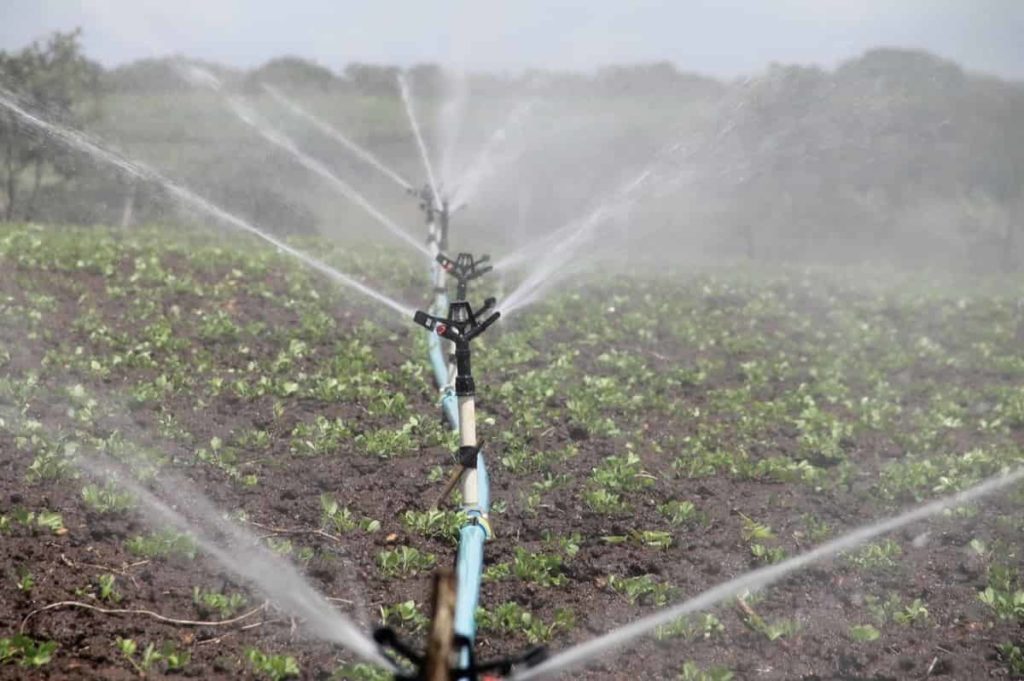
- Implementation of various horticulture and sericulture schemes in the district.
- To suggest the best agricultural and plant protection measures to increase the productivity of crops.
- Provide technical assistance to farmers to earn a sustainable income.
- Encouraging farmers to adopt drip irrigation and organic methods in horticulture and sericulture.
- Provide training to farmers in horticulture sericulture and marketing.
- Promote production of quality plant materials and supply to farmers.
Hyderabad
The major crops grown in Telangana are Rice, Maize, Pulses, Peanuts, Cotton, Chillies, and Sugarcane. Chilli production raise by 24,000 metric tonnes with an estimated total production of about 3.28 lakh metric tonnes. Oilseeds also saw a significant increase in production, with total production estimated at 6.6 million metric tons, up 42,000 metric tons from the previous year.
The production capacity of Paddy per acre has increased to an estimated 6.6 million metric tons of Rice. Cotton, the state’s second most important crop, was estimated at 48 lakh metric tons in terms of production, 13 lakh metric tons more than the previous year. The state government had procured Paddy, Maize, Bengal gram, Jowar, Sunflower, and Safflower at the subsidized price fixed by the Center during the last Rabi season.
Jagtial
Jagtial district is rich in natural resources for agriculture. There is a lot of scope for agriculture in Jagtial district and farmers are going to get huge profits in the coming days. The major crops grown in the district are Paddy, Cotton, Maize, Turmeric, Groundnut, and Chilli. The important fruit crops are Mango and Sweet Orange. Of late, Banana, Papaya, and vegetable cultivation are also gaining momentum in the district.
Jangaon
The district economy is largely dependent on agriculture. Increasing agricultural production and productivity will boost the health of the district economy. The crops grown in this area are Paddy, Maize, Red Gram, Green Gram, Cotton, Ground Nut, vegetables, and other crops.
Jayashankar Bhupalapally
This is the largest occupant of agriculture in the rural areas of the Bhopal Pali district. Paddy, Chilli, Cotton, and Turmeric are the major crops grown in the area. Jayashankar district consisting of 11 mandals has been endowed with good climatic conditions, fertile soil, and abundant capacity of groundwater. This district is suitable for growing a wide range of horticultural crops.
An action plan has been proposed for the overall development of the horticulture sector to encourage farmers towards harnessing the potential of the district and towards crop diversification. The area under fruit crop in the district is 998 acres and it is proposed to increase the fruit production gradually. The area under vegetable cultivation in the district is 452 acres and there is a huge domestic demand for vegetables in the district which needs to be met by doubling the area under different vegetable crops.
Jogulamba Gadwal
This district is most famous for its Cotton production in the state. The Cotton grown here, especially in the Gattu Mandal, is classified as a high-quality cotton seed due to its soil condition, water, and rainfall. Near Kurnool, in the extreme south of Telangana is the Jogulamba Gadwal district.
In case you miss this: Make Lakhs with Cotton Farming, Find Out Simple Facts and Techniques
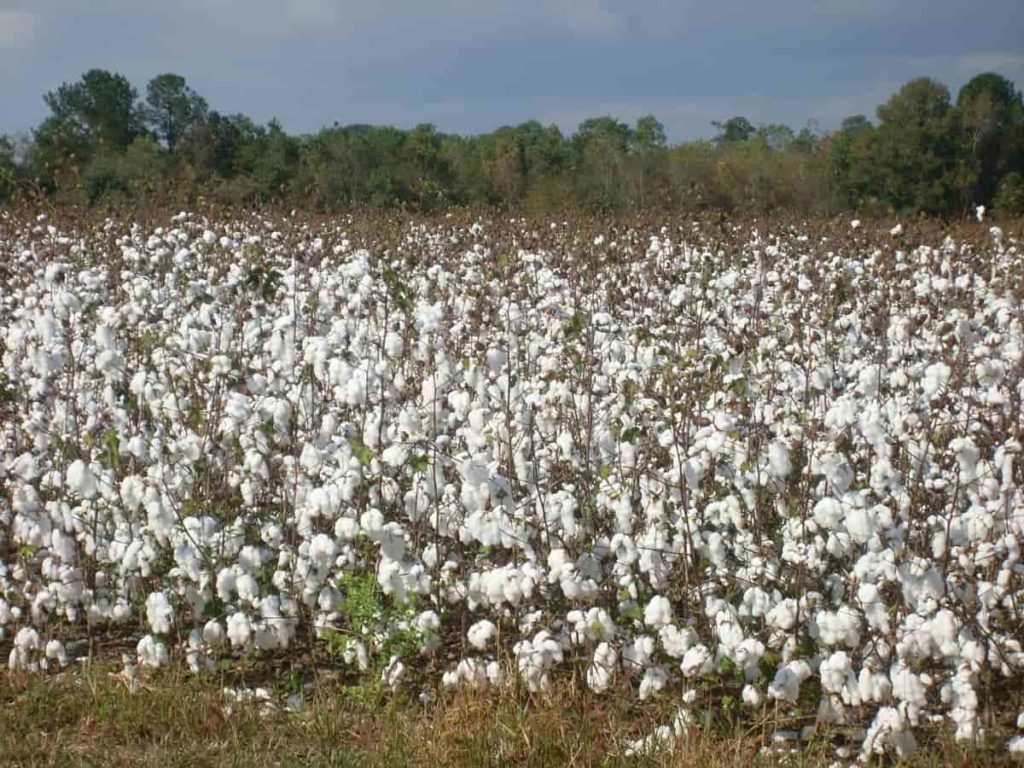
Kamareddy
Kamareddy consists mostly of red loamy soils, medium black clay, and deep black soil. The average land area is 1.53 acres and about 91% of the farmers in the area are small and marginal farmers. The soil spread throughout the district is deficient in micronutrients. The major crops grown in the area are Paddy, Sugarcane, and Maize. Micronutrient deficiencies are widespread and have resulted in limited crop production.
Insect and wild animal attacks on crops are also a major problem. Due to these various problems, farmers in the area are slowly losing interest in agriculture and migrating to nearby cities. To help farmers, to solve this problem, it is proposed to develop three-tier farming institutions and strengthen them as sustainable/self-sufficient to achieve a large-scale economy in agriculture.
The district economy is largely dependent on agriculture. Increasing agricultural production and productivity will boost the health of the district economy. The Kamareddy region of Telangana is known for its sugarcane production and about 70% of the farmers cultivate this crop. Sugarcane is grown in the areas of Kamareddy, Sadashiva Nagur, Machareddy, and Domakonda areas.
Karimnagar
The main crops grown in Karimnagar are Paddy, Maize, Cotton, and Chilli. Horticultural crops like Mango, Tomato, Onion, and spices like Turmeric, Cabbage, and Chilli are being grown in many parts of the district. The state government, which has already introduced several welfare schemes for the welfare of farmers across the state, is going to introduce a new policy in the agricultural sector from this Kharif season.
As part of the plan, the government will instruct farmers on which crops to cultivate to maximize profits with the imposition of certain restrictions in the respective areas across the state. The government will also advise farmers not to grow crops that are not in demand in the market, which could lead to losses in the future.
Khammam
Paddy, Cotton, Maize, Pulses are important crops in the Kharif season and Paddy, Maize, Pulses, and Chillies are important crops during Rabi. Agriculture is the most important sector of the district economy, as 20% of the population is engaged in agriculture and allied activities for their livelihood. Khammam district has been one of the districts in the state where farmers with relatively efficient performance in agricultural production are relatively more responsive and adaptable to changing technologies and market forces.
Komaram Bheem Asifabad
Cotton, Paddy, Red Gram, Millet, Soybean, and horticulture are the major crops grown in the region. Cotton is grown in more than 50% of the cultivated area. Komaram Bheem district has the potential to become the center of pulses in southern India.
Mahabubabad
Agriculture is the most important sector of the district economy, as 60% of the population is engaged in agriculture and allied activities for their livelihood. The total area of the district is 194248 hectares of which 188902 is numbered. The major crops grown in the fields are Paddy, Cotton, Maize, Pulses, and Chillies. Mahabubabad district has been one of the few districts in the state where farmers with relatively efficient performance in agricultural production are relatively more responsive and adaptable to changing technologies and market forces.
Mahabubnagar
The main food crops in the Mahabubnagar district are Rice, Millet, Millet, and Ragi while the main commercial crops are Peanut, Castor, Chilli, and Tobacco. Red gram is an important crop of pulses.
In case you miss this: Organic Chilli Cultivation (Peppers/Mirchi), Farming Process
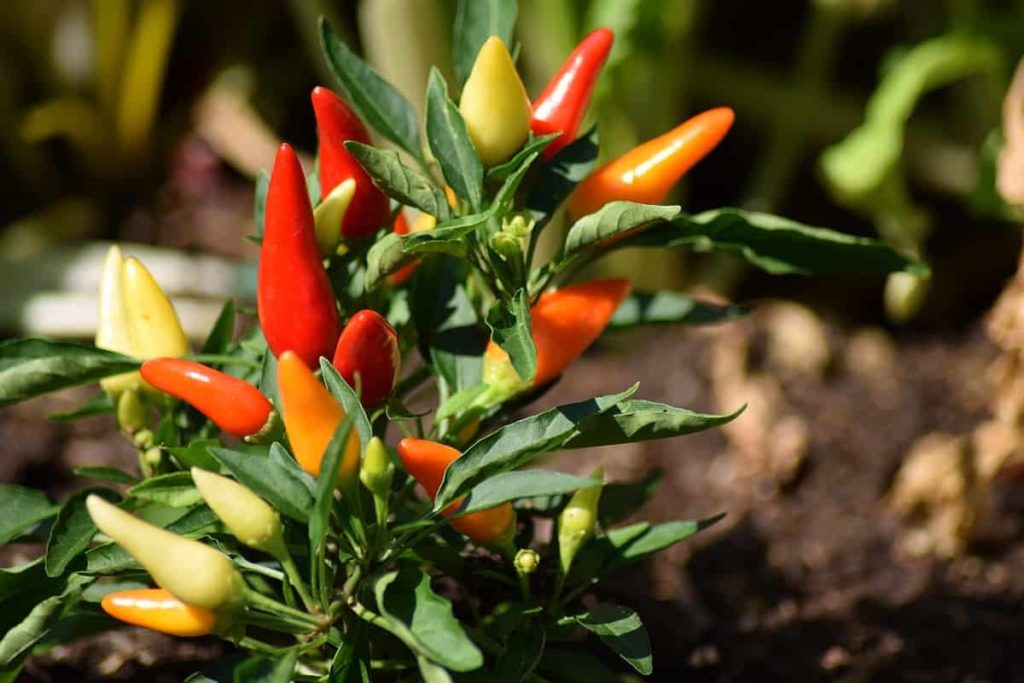
Mancherial
The main crops are Rice, Red Gram, Maize, Cotton, Vegetables,
Medak
Rice, Sugarcane, and Maize are grown in the Kharif season while Lentils, Millet, Safflower, and others are grown in the Rabi season, which is rain-fed. The district has 2.2 lakh acres of cultivable land out of which only 40% has been cultivated so far in this Kharif. The crops sown are Cotton, Maize, Pulses, Sugarcane, and Millet. Medak is the most backward district of Telangana. Condition. This is a semi-arid area. Low rainfall Sometimes monsoon failure affects agriculture and dependent laborers. More than 50% of the population is Dalit, tribal, and backward classes.
Traditional agricultural practices such as the use of agricultural fertilizers, green manure, protection of traditional seeds that ensure food security for families are rarely seen. Traditional agricultural methods make the soil rich and rich in micronutrients found in edible grains. Use of dietary grains where micronutrients are deficient as a result of malnutrition. Agriculture is the most important sector of the district economy, as 80% of the population is engaged in agriculture and allied activities for their livelihood.
Medchal-Malkajgiri
Agriculture Department plays an important role in meeting the nutritional needs of one of the most densely populated districts – Medichal – Malkajgiri.
- Total Agricultural Land in the District (as per RB Record): 70000 acres
- Net Cultivated Area: 26807 Ac
- Main Crops – Paddy (47%), Maize (11%), Fodder (6%), Red gram ( 3%), cotton (2%), other food crops (30%).
- Soil – Red soil is predominant (70%), Black soil (30%)
Nagarkurnool
This district is characterized by red and sandy soil (low water retention capacity) which is not suitable for the cultivation of rainfed crops. During Kharif season, farmers cultivate Cotton, Red Gram, Castor, Maize, Groundnut in these lands which require less water for production.
During Kharif season, farmers cultivate Cotton, Red Gram, Castor, Maize, Groundnut in these lands which require less water for production. The district is characterized by red and sandy soil (low water retention capacity) which is not suitable for the cultivation of rainfed crops. During Kharif season, farmers cultivate cotton, red gram, castor, maize, groundnut in these lands which require less water for production.
- Red sandy soil – 62%
- Sandy looms – 29%
- Black cotton soil – 9%
- Land suitable for agriculture – 8,61,478 acres
Nalgonda
Nalgonda district is an agricultural district with good sources of irrigation and favorable climatic conditions. About 75% of the population in the Nalgonda district is dependent on direct or indirect agriculture. The major crops grown are paddy and cotton. For the production of Paddy and Groundnut seeds, the climatic conditions are very favorable and for the state of Telangana to be considered as the seed bowl of India, the cooperation of the Nalgonda district in this regard is invaluable. The Department of Agriculture is committed to more importantly promoting agricultural development to create better socio-economic conditions among the farming community through the implementation of government programs.
The agricultural sector has the potential to create better opportunities and livelihoods, and poverty can be eradicated from there. Given the potential contribution and role of the agriculture sector in the district, there is a need to develop a strategic development plan, the implementation of which should be planned to achieve development in the agricultural sector. Paddy nurseries were planted on 15,945 acres and grafted into 50,205 acres. Green gram was cultivated in 30 acres, groundnut in 7,933 acres, Bengal gram in 31 acres, Horse gram in 25 acres, Millet in 25 acres, and Sesame in 165 acres.
In case you miss this: Ways Groundnut Farming Can Make You Rich in Short Time
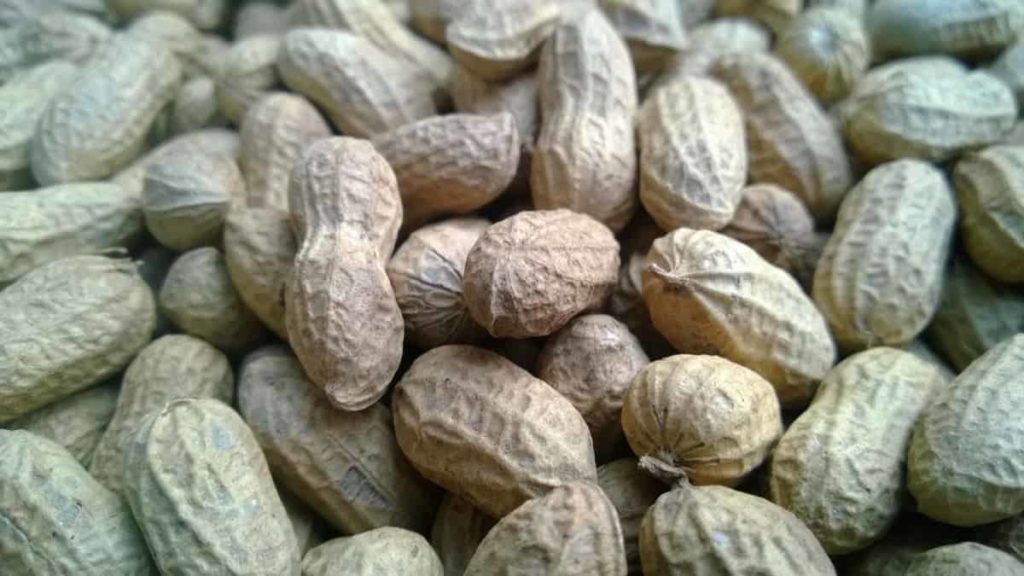
Nirmal
Due to the good rains of the last monsoon, the crop area in the Nirmal district has more than doubled during the current Rabi season. During the rainy season, which received about 5% more rainfall, it recharged groundwater throughout the district and filled tanks and projects. Compared to the average area of 72,000 acres in the Rabi season, we have about 1.6 million acres under different crops so far this season. Paddy transplantation has seen a quantum jump this season, covering an area of about 57,000 acres, compared to the typical 24,000 acres. The mandals in which paddy transplantation is in full swing are Dilawarpur, Nirmal, Laxmanchanda, Mamda, Khanapur, Nirmal, and Sarangapur.
Nizamabad
The Nizamabad market sells commodities like Paddy, Maize, Turmeric, Pulses, Soybeans, Sunflower, Onions, and other crops. It is famous in India for its Turmeric.
Peddapali
Peddapali district is an important place in Telangana in terms of historical and cultural heritage. It has large coal reserves. The major crops grown in the district are Paddy, Green Gram, Maize, and Red Gram. Commercial crops are Cotton, Oilseeds, Ground Nut, Sunflower, Castor. The main horticultural crops are Mangoes, Lemons, Sweet Lemons.
Rajanna Sircilla
The main crops grown in this village are Paddy, Cotton, Maize, and to some extent vegetables. During the discussion, it was understood that farmers do not know the importance and aspects of crop rotation, seed treatment, and plant protection. Based on the identified gap, the scientist has interacted with farmers in various fields and suggested appropriate solutions to the problems.
Rangareddy
Sustainable and economical crop production is a lifeline for the farmer, who devotes his energy not only to his livelihood but also to the survival of the non-farming community. Therefore, protecting the interests of farmers is the primary duty of the government. The major food and commercial crops are grown in the district are Maize, Millet, Green / Black / Bengal / Red Gram, Oilseeds, Cotton, and Sugarcane.
Ranga Reddy district has a dry to semi-arid climate with light to heavy soils (red soil and black cotton soil). The Department of Agriculture has been set up as an arm of the government to carry out the following tasks in the process of harmonizing the farming community.
Sangareddy
Agriculture is the most important sector of the district economy. The government’s policy and objectives are to ensure stability in agricultural production and to sustainably increase agricultural production to meet the food needs of the growing population and also to meet the raw material requirements of agro-based industries.
Siddipet
Siddipet is a major agricultural district in Telangana, India. However, smallholder farmers lack access to quality inputs, knowledge of new production techniques, and better access to markets. These differences have led to lower production, higher production costs, higher use of chemicals and fertilizers, and lower quality production. As a result, farmers get lower economic returns despite their significant investment of time and resources. The major crops grown are Paddy, Maize, Castor, Millet, and Pulses. Rabi crops like Millet, Bengal gram, Sunflower, and Chilli are grown.
In case you miss this: Simple Techniques to Increase the Maize Yield for Higher Profits
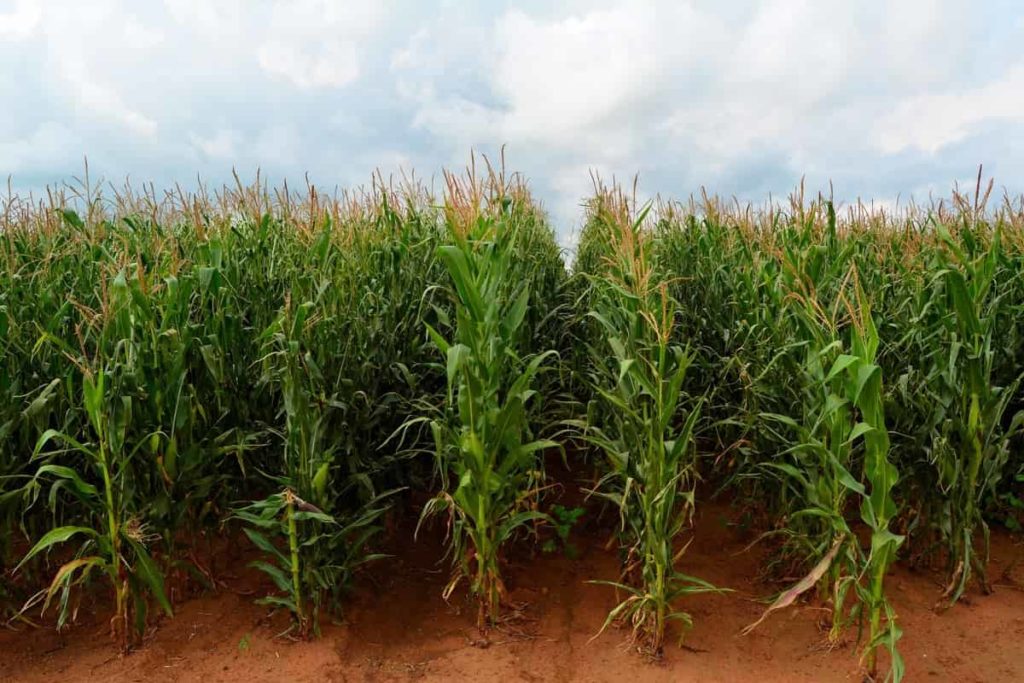
Suryapet
Suryapet’s economy is mainly agricultural. It is one of the major commercial hubs for farmers in the Telangana region. The Agricultural Market Yard in Suryapet is one of the busiest and largest markets in the state. There are many small to medium-scale industries in Suryapet. The Agricultural Market Yard in Suryapet is one of the busiest and largest markets in the state.
A new agricultural market of about 30 acres (100,000 m2) is ready to open for farmers on Khammam Road. In which the old (existing) agricultural market laid on Market Road has been serving the farmers for many decades. Red gram and cotton are expected to be grown on an additional 42,200 acres. A total of 5,64,950 acres are expected to be cultivated for the Rainy season in the Suryapet district. However, Paddy will be an important crop with 56% of the land being cultivated under the plow.
Vikarabad
Agriculture is the most important sector of the district economy, as 20% of the population is engaged in agriculture and allied activities for their livelihood.
Wanaparthy
The main occupation of the people of Wanaparthy district is agriculture. About 75% of the total labor force is engaged in agriculture. The major crops grown in the district are Paddy, Groundnut, Millet, Maize, Red Gram, Castor, Cotton, and Chilli. During Kharif 2018, a total area of 199464 acres was cultivated and during Rabi 2018-19, 124128 acres were cultivated under different crops. Horticulture has been identified as a “focus sector” for the development of the Vanparthi district and the state. Horticultural crops provide better alternatives to agricultural diversification as they see horticulture as the engine of growth.
Agricultural diversification is recognized as an important strategy to overcome emerging challenges in agriculture. Horticulture, Area Development, Nurseries, Cultivation and Farming, Crop Care, Products, Post-Crop Management, Trade, Storage, Processing, Transportation, Marketing, and one of the direct and indirect activities. The major type of soil found in the district is red sandy soil. Red sandy soil occupies 47% of the geographical area. The share of sandy looms is 42% and that of black cotton soil is 11%.
Warangal (Rural) and Warangal (Urban)
Agriculture in Warangal has changed since the 1960s. In the early ’60s, millet accounted for 41% of the total cultivated area in the district, followed by Rice (23%) and Green Gram (19%). The main commercial crops were Groundnut, Castor, and Sesame. At that time Pepper was grown on 7000 acres, Cotton on 3000 acres, and Tobacco on 4000 acres.
Overall, farmers grow grains (mostly Rice and Maize with some Sorghum) on 287,000 hectares, Pulses and Beans (Peanuts, Green Gram, Red Gram, Millet, and Bengal gram) at 104,300 hectares (17.1% of the gross cropped area), and horticultural crops (mostly Chillies, some Turmeric) on 33,400 ha (5.5% of the gross cropped area). Only 39.7% of cotton is irrigated, and the rest is rainfed. The average cotton yield is 438 kg per hectare.
In case you miss this: Paddy Seed Germination, Process, and Methods
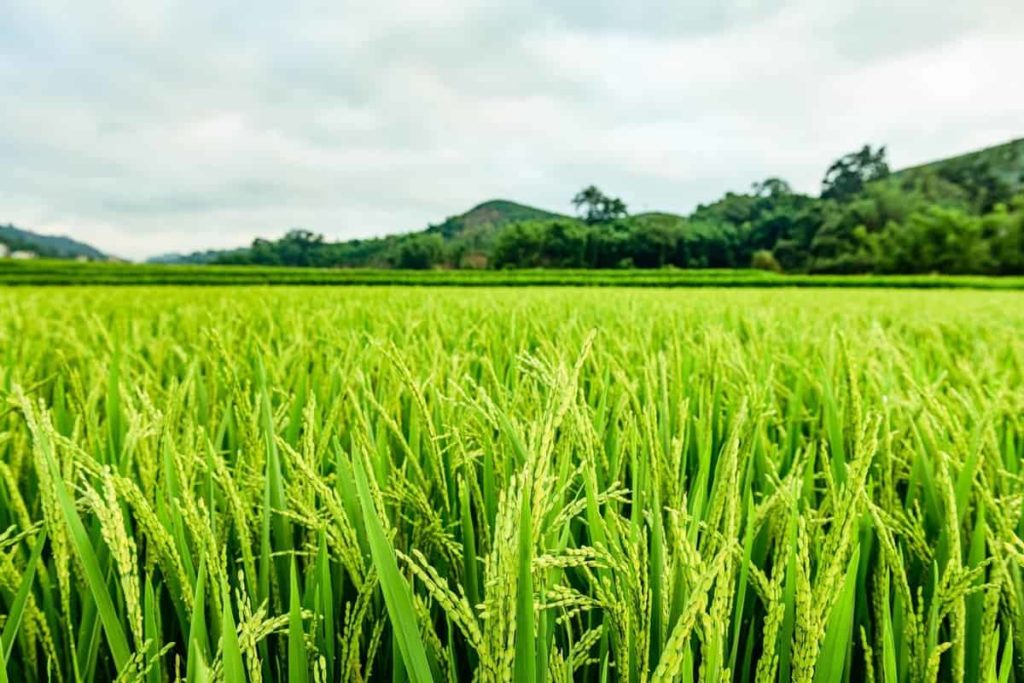
Yadadri Bhuvanagiri
Dryland crops – Groundnut, Green Gram, Sunflower, and others produce 90 to 120 days and help farmers increase their income. Agriculture Extension Officers to hold farmers’ meetings in the village and create awareness among them about the cultivation of alternative crops.
- How to Make Houseplants Bushy: Effective Tips and Ideas
- Innovative Strategies for Boosting Coconut Pollination and Yield
- Pollination Strategies for Maximum Pumpkin Yield
- The Complete Guide to Chicken Fattening: Strategies for Maximum Growth
- Natural Solutions for Tulip Problems: 100% Effective Remedies for Leaf and Bulb-Related Issues
- Revolutionizing Citrus Preservation: Towards a Healthier, Greener Future
- Natural Solutions for Peony Leaf and Flower Problems: 100% Effective Remedies
- Maximizing Profits with Avocado Contract Farming in India: A Comprehensive Guide
- Natural Solutions for Hydrangea Problems: 100% Effective Remedies for Leaf and Flowers
- The Ultimate Guide to Choosing the Perfect Foliage Friend: Bringing Life Indoors
- From Sunlight to Sustainability: 15 Ways to Use Solar Technology in Agriculture
- The Ultimate Guide to Dong Tao Chicken: Exploring from History to Raising
- The Eco-Friendly Makeover: How to Convert Your Unused Swimming Pool into a Fish Pond
- Mastering the Art of Delaware Chicken Farming: Essentials for Healthy Backyard Flocks
- 20 Best Homemade Fertilizers for Money Plant: DIY Recipes and Application Methods
- How to Craft a Comprehensive Free-Range Chicken Farming Business Plan
- Brighten Your Flock: Raising Easter Egger Chickens for Beauty and Bounty
- How to Optimize Your Poultry Egg Farm Business Plan with These Strategies
- Subsidy for Spirulina Cultivation: How Indian Government Schemes Encouraging Spirulina Farmers
- Ultimate Guide to Raising Dominique Chickens: Breeding, Feeding, Egg-Production, and Care
- Mastering the Art of Raising Jersey Giant Chickens: Care, Feeding, and More
- Ultimate Guide to Raising Legbar Chickens: Breeding, Farming Practices, Diet, Egg-Production
- How to Raise Welsummer Chickens: A Comprehensive Guide for Beginners
- How to Protect Indoor Plants in Winter: A Comprehensive Guide
- Ultimate Guide to Grow Bag Gardening: Tips, Tricks, and Planting Ideas for Urban Gardeners
- Guide to Lotus Cultivation: How to Propagate, Plant, Grow, Care, Cost, and Profit
- Agriculture Drone Subsidy Scheme: Government Kisan Subsidy, License, and How to Apply Online
- Ultimate Guide to Raising Araucana Chickens: Breed Profile, Farming Economics, Diet, and Care
- Bringing Hydroponics to Classroom: Importance, Benefits of Learning for School Students
- Ultimate Guide to Raising Polish Chickens: Breed Profile, Farming Economics, Diet, and Care
- Ultimate Guide to Raising Australorp Chickens: Profile, Farming Economics, Egg Production, Diet, and Care
- Silkie Chicken Farming: Raising Practices, Varieties, Egg Production, Diet, and Care
- Sussex Chicken Farming: Raising Practices, Varieties, Egg Production, Diet and Care
- Homemade Feed Formulations for Livestock: Discover Cost-effective Starter to Finisher Feed Recipes
- 20 Best Pig Weight Gain Supplements: Top Swine Weight Gain Formulas
- Ultimate Guide to Elderberry Farming: Propagation, Planting, Yield, Cost, and Profit